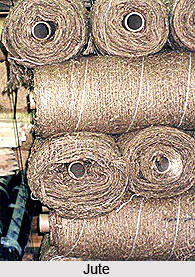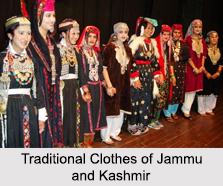 Jute was called the golden fibre of Indian subcontinent. After partition, while the jute mills remained in India, centred around Calcutta, the bulk of jute-providing area went over to the then East Pakistan i.e. Bangladesh of present times. Over the years the great loss has been recovered as promised. Jute grows well on well-drained rich soils in the flood plains, where soils are rehabilitated nearly each year. High temperature also is a must during the growing season. West Bengal, Assam and Orissa are the states that produce jute and its another variety- mesta.
Jute was called the golden fibre of Indian subcontinent. After partition, while the jute mills remained in India, centred around Calcutta, the bulk of jute-providing area went over to the then East Pakistan i.e. Bangladesh of present times. Over the years the great loss has been recovered as promised. Jute grows well on well-drained rich soils in the flood plains, where soils are rehabilitated nearly each year. High temperature also is a must during the growing season. West Bengal, Assam and Orissa are the states that produce jute and its another variety- mesta.
In 1950-51, area under jute cultivation was 0.57 million hectares. Production was 3.3 million bales (180 kg each) and yield per hectare was only one quintal. By 1997-98, the area rose to 1.1 million hectares and production surpassed the 11 million tonnes mark. The yield also shot up to around 1800 kg per hectare.





















